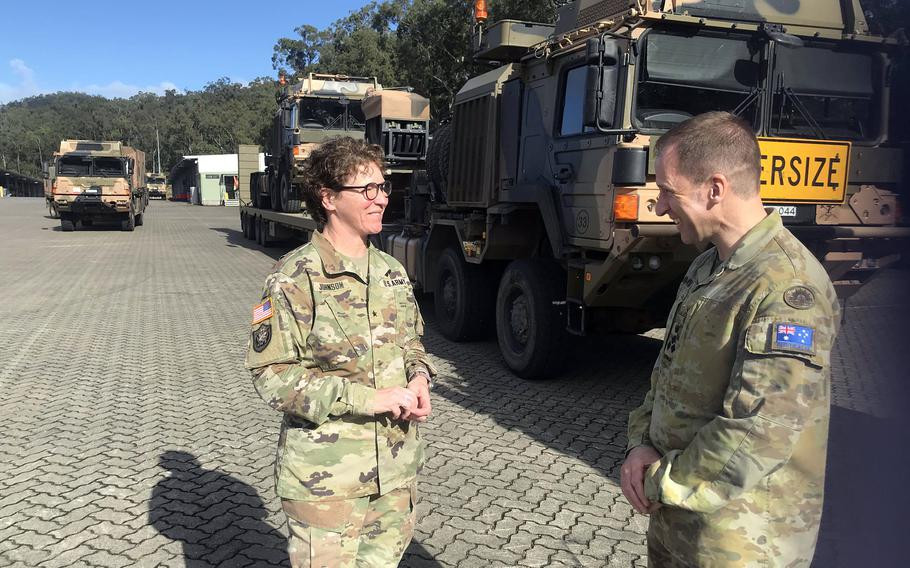
Troops spearheading large-scale logistics operation to feed, fuel and arm more than 35,000 servicemembers across southern continent as allies seek to counter growing Chinese military power.
American and Australian troops are spearheading a large-scale logistics operation to feed, fuel and arm more than 35,000 service members across the southern continent as the allies seek to counter growing Chinese military power.
The effort is part of the largest-ever iteration of Talisman Sabre, biennial joint training between the United States and Australia. This year’s drills began July 13 and run through Aug. 4, involving forces from 19 nations.
Approximately 850 logistics personnel from all service branches are rotating into Australia for the exercise, Maj. Adan Cazarez, a spokesman for the Hawaii-based 8th Theater Sustainment Command, said by email Tuesday. They are working alongside counterparts from Australia, New Zealand, Canada and the United Kingdom.
As part of growing trilateral cooperation, naval officers from the U.S., Australia and Japan signed a logistics agreement aboard the amphibious assault ship USS America during a July 11 port call in Brisbane. The pact allows for quicker missile reloads and more flexible refueling, according to a Navy news release that day.
Australia is also ramping up its domestic missile production in partnership with U.S. defense contractor Lockheed Martin under the AUKUS security agreement with the U.S. and U.K.
This year marks the first major movement of prepositioned U.S. equipment from South Australia to the country’s northeast, Cazarez said. He declined to discuss specifics of the equipment for security reasons.
American and Australian troops at Brisbane’s Gallipoli Barracks are managing the logistics operation, said Brig. Gen. Dawn Johnson, who leads the 143rd Sustainment Command (Expeditionary), a U.S. Army Reserve unit headquartered in Orlando, Fla.
“This is our first exposure to this,” the Iraq War veteran said of her unit’s work with the Australians.
“This is going to be an enduring mission for the 143rd,” she said, standing beside trucks in a motor pool at the barracks Tuesday.
The sustainment command includes 8,000 soldiers across 10 U.S. states. Australia’s vast and rugged interior presents unique logistical challenges, including long supply routes stretching hundreds of miles, potential encounters with wandering livestock, and “road trains” — massive multi-trailer trucks.
For Americans, there’s also the adjustment of driving on the left side of the road. All these factors compound difficulties for young military drivers, Johnson said.
“What we see are young people not driving so much,” she said, adding that many soldiers are more accustomed to hailing rides via mobile apps.
It’s only the second time that the combined sustainment outfit has operated during Talisman Sabre, said Australian army Brig. Gen. Andrew Harrison-Wyatt, an Iraq and Afghanistan veteran who oversees joint logistics from the Australian military.
The logistics task force includes Australian government civilians and more than 1,000 contractors handling transportation, maintenance and fuel supply, he said Tuesday at the barracks.
Supplies are being moved using a variety of military aircraft — including C-17 Globemaster IIIs, C-130J Super Hercules and MV-22 Ospreys — along with amphibious vessels, Harrison-Wyatt said. Logistics hubs stretch more than 2,000 miles across the continent.
“Rather than two separate forces it’s a combined joint force fully integrated from the top down,” Harrison-Wyatt said.
He added that the partnership continues to grow and the next Talisman Sabre in 2027 will be even bigger and more complex.
- Security

